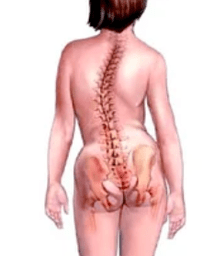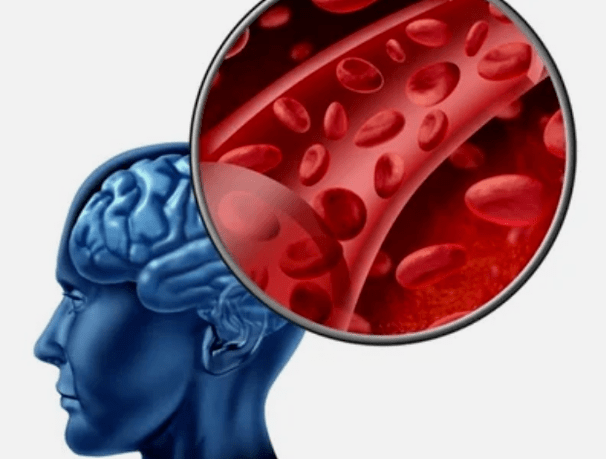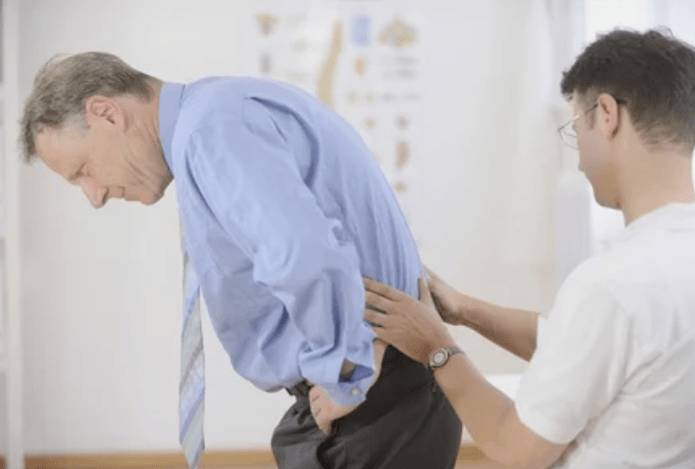The osteochondrosis of the cervical region is a serious pathology, which is characterized by degenerative distributing changes in the structure of intervertebral discs. This rape often leads to dangerous complications. Therefore, it is strictly forbidden to ignore it. To deal with the disease, you must consult a specialist in a timely manner.

The essence of pathology
The osteochondrosis of the cervical column is a pathology in which the soft intervertebral pulp is transformed into bone tissue. This causes pinch of blood vessels and nerve fibers.
The characteristic features of the disease include pain syndrome. It is located on the neck, shoulders, the upper back, head. Many patients face dizziness, pressure fluctuations, nausea, air deficiency.
The dystotic changes in the area of the cervical region are generally found in the Middle Ages and advanced. This is due to the vertical position of the skeleton and the characteristics of load distribution.
Doctors point out that the disease occurs previously in men. This happens at 45-50 years. Women face the manifestations of cervical osteochondrosis later at 50-55 years.
Reasons
A variety of factors lead to the development of this form of the disease. The main causes of cervical osteochondrosis include the following:
- Insufficient physical activity. People who lead an inactive lifestyle have an exhaustion of the back muscles that support the spine. The deposition of salts that appear due to lactic acid can aggravate this state of affairs. The weakened spine is easily deforms and becomes less mobile.
- Obesity. The appearance of excess weight is a great danger to the musculoskeletal system. In addition to increasing the loads in the spine, the adipose tissues take the beneficial substances that are required to maintain muscle tone and cartilage.
- Long stay in a motionless position. This disease is often found in drivers and people who participate in intellectual work. After a prolonged stay in a stifled state, cartilaginous fabrics gradually lose elasticity. Over time, intervertebral discs acquire an antinatural configuration.
- Nutrition disorders. For the body to work properly, proteins, fats, minerals and vitamins must be present in the diet in sufficient quantities. Irrational nutrition causes a violation of tissue structure and leads to their rapid destruction.
- Back damage. This can cause pressure redistribution to the cartilage, which causes a change in its structure and shape.
- Pathology of the musculoskeletal system. This category includes scoliosis, rheumatism, bone tuberculosis.
Often, cervical osteochondrosis is the result of a hereditary trend. In this case, the pathology develops without the influence of significant factors.
To prevent the appearance of the disease, therapy must begin in a timely manner.

Stages of the disease
There are several stages of pathology, each of which is characterized by certain characteristics:
- The first key characteristic of the State is the instability of the spine. It manifests itself in the initial lesions of the intervertebral discs;
- The second: the main manifestation is bump. This condition is characterized by a decrease in cracks between vertebrae, a gradual violation of the integrity of the fibrous ring. There is often pain caused by nerve compression;
- The third: At this stage, the fibrous ring is completely destroyed. This implies the appearance of intervertebral hernia. This condition is characterized by severe damage to the column;
- The room is the most difficult. At this stage, with any movement, acute pain occurs. Sometimes the condition improves, but this indicates the appearance of bone structures that connect the vertebrae. This implies a decrease in motor activity and causes disability.
Symptoms
This form of osteochondrosis is characterized by special manifestations. This is due to the nearby location of the cervical vertebrae and the low height of the discs. Therefore, even small changes cause serious manifestations. In addition, this form of osteochondrosis is often accompanied by compression of cephalorrachid roots.
The symptoms of cervical osteochondrosis include the following:
- Pain. They are located in several areas: the back of the head, neck, shoulder tape, hands. The discomfort in the hands or shoulder girdle is due to a pinched nerves. Pain syndrome in the occipital zone is associated with muscle tissue spasms and circulatory disorders.
- Weakness in the hands. This sign is due to the damage to the motor nerves responsible for the innervation of the muscles of the hands.
- Weakening of sensitivity in the hands. This characteristic is due to the damage to the roots, which include sensitive fibers responsible for the innervation of the skin of the hands.
- Reducing the motor activity of the neck, the appearance of the crunch. Such symptoms of osteochondrosis of the cervical column become the result of a decrease in the height of the discs. They are also defeated by the intervertebral joints and the formation of bone growth in the vertebrae.
- Weakness, loss of coordination of movements and dizziness. These manifestations are due to the damage to the vertebral artery. Fibrous tissue formation and vertebral displacement causes problems with blood flow in the arteries. As a result, there is a deterioration in blood flow in the occipital area of the brain and cerebellum.
- Auditory deterioration, numbness of language, weakening of visual acuity. These symptoms of osteochondrosis of the cervical column are due to the aggravation of the situation and the progression of brain circulation disorders.
Diagnostic methods
To identify the osteochondrosis of the neck, you must carry out a series of diagnostic procedures.The most informative studies include the following:
- Magnetic resonance is the most informative study that allows it to evaluate the condition of the vertebrae and discs between them. In addition, with the help of this procedure, it is possible to detect hernias, evaluate its size and location.
- X -Ray: This procedure is one of the most affordable research methods. However, it often becomes not very informative, especially in the last stages of the disease.
- Computed tomography: It allows you to identify the presence of changes in the structure of the vertebrae. However, the presence of hernias or compression of the spinal cord to diagnose in this way is quite difficult.
- Duplex ultrasound scan: helps detect blood flow disorders in the vertebral artery. The procedure allows you to detect obstacles and a slowdown in the blood flow in the vessels.
Treatment methods
The treatment of cervical osteochondrosis is selected taking into account several factors. This is done depending on the stage of the disease, the shape of the disease, the severity of the symptoms.
The key therapy methods include the following:
- Conservative therapy: It can be drug and not fragment;
- Surgical intervention;
- A combination of conservative methods and surgical treatment.
Physiotherapy methods
The treatment of the osteochondrosis of the cervical column necessarily requires the use of the main physiotherapy methods.
The most effective procedures include the following:
- Electrophoresis using drugs. Under the influence of electric current, medication particles penetrate the desired area. Euphilin and novocaine are used for the procedure. Thanks to this, it is possible to stimulate blood circulation and achieve an analgesic effect.
- Ultrasound exposure. Thanks to this procedure, it is possible to deal with pain and stop inflammation. This technique also activates metabolic processes in the body.
- MagnetotherapyWith your help, it is possible to deal with edema and achieve an analgesic effect.
- Laser exposure. This method helps normalize blood circulation and helps deal with inflammation.
The most effective exercises should include the following:
- Lie on your stomach, rest your hands on the floor, raise your head and torso. It is worth making sure the back remains straight. In this position, it is necessary to remain 1-2 minutes. Then sink carefully on the floor. Make 2-3 repetitions.
- Lie on your stomach, stretch your hands, turn your head on the left side and touch your ear to the floor. Similar movement to perform right. Do 6-7 times in each address.
- Sit down and, breathing, bend. Touch the chest with a chin. After that, exhale, diverts back, throwing the head back. Perform 10-15 repetitions.
- Sit, put your palms on your forehead. Press your head in your arms for 30 seconds. In total, you must make 2-3 repetitions.
- Slowly turn your head in different directions. In each direction, it must make 10 rotations. When dizziness appears, the exercise must stop.

Massage
To eliminate cervical osteochondrosis signs, you must definitely make a massage. The procedure must be carried out as careful as possible, without making efforts. The movements must extend to the neck, the collar site and the posterior area.
It is better to make a massage in a liar position on the stomach.In extreme cases, the sitting procedure is allowed.
The technique is based on the use of such techniques:
- Camisco: It implies influence on skin surface areas. To do this, the palms of the hands or the yolks of their fingers must caress the back, move from the head to the upper third of the back. You can also make Zigzag movements.
- Sprezing: It consists of the effects in the deep areas of the skin in the upper third of the back. To do this, with the thumb and index, the skin is captured. This must be done very carefully, without affecting fabrics in the vertebral area.
- Rubing: The procedure is carried out to heat the skin and increase blood circulation in the necklace region. It must be done very carefully, without affecting the thorny sections of the vertebrae.
- A kneaded: it is quite rare, since it implies the effect on deeply located fabrics. This can only aggravate an anomaly.
With the osteochondrosis, the car can be performed.To do this, it is convenient to sit and use the methods of stroking and rubbing the neck and shoulders. It is advisable to complement the procedure with rubbing ointments that contribute to increase blood flow and relieve pain in the affected area.
Surgical treatment
The realization of the surgical intervention is shown in the following cases:
- The presence of neurological deviations is a violation of motor activity, weakness or loss of hands sensitivity, loss of control over defecation. When such symptoms appear, you can suspect persistent nerve damage. Therefore, it is very important to carry out the operation to eliminate compression.
- The presence of constant pain, which violates a person's quality of life and cannot be eliminated by conservative methods.
With the development of cervical osteochondrosis, the following operations can be performed:
- Front cervical discoctomy and spondilode. The operation is performed through the front surface of the neck. The procedure aims to eliminate the affected disc, the decompression of nerve fibers and the implementation of a special device to maintain the desired distance between the vertebrae.
- Replacement of the intervertebral disc. In this case, the affected disc is eliminated and artificial inserted. Thanks to this procedure, it is possible to maintain motor activity.
The realization of surgical interventions to eliminate neurological symptoms has high efficiency. According to separate estimates, it is 80-90 %. However, such methods are not effective enough to eliminate pain associated with osteochondrosis.
Possible dangers
Cervical osteochondrosis is a serious type of pathology. In this area of the spine, there are many nerves and vessels responsible for brain nutrition. In addition, cervical vertebrae firmly adjust. Therefore, even small changes in this area cause squeezes or displacements of blood vessels and nerves.
Cerebral blood flow disorders cause the appearance of migraines, vegetable dystonia, hypertension. There is also a risk of problems in the functioning of the respiratory system, the heart and blood vessels. Many people are disturbed by hearing, visual acuity decreases, the coordination of movements suffers.
In difficult situations, cervical osteochondrosis causes vertebral artery syndrome. This container is responsible for the supply of blood to the cerebellum and an oblong brain. With the compression of the artery, there is the risk of cerebral ischemia and the development of spinal stroke.
In addition, pathology can cause damage to nerve roots. This is manifested in the form of growth formation, the appearance of broadcasting, loss of motor activity. The most difficult consequence of the disease is the compression of the spinal cord, which can lead to a fatal result.
Prevention
To avoid the development of pathology, it is worth observing simple rules:
- Systematically practice sports;
- Eat properly;
- Take preparations of vitamins and condroprotectors prescribed by a doctor;
- Avoid a long stay in an awkward position;
- Use orthopedic furniture;
- Choose clothes and shoes for the season, especially in winter.
Cervical osteochondrosis is a fairly dangerous disease that can lead to negative health consequences.
To avoid serious complications, you must consult a doctor in a timely manner and clearly follow their recommendations.

























